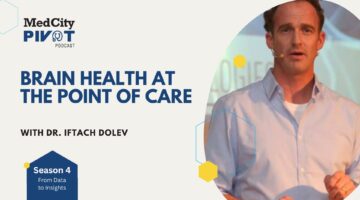
Most of us are familiar with the staggering statistics that position cardiovascular disease (CVD) as the number one cause of death globally. Delving deeper, it’s crucial to recognize that coronary artery disease (CAD) is a subset of CVD that tops the charts, claiming roughly 1 in 5 lives. CAD occurs when the arteries supplying blood to the heart become narrowed or blocked by plaque buildup, leading to heart attacks and other serious complications. The encouraging news is that CAD is highly preventable if diagnosed and managed early, with approximately 80% of deaths being avoidable. Early detection of CAD should be a healthcare priority, and both patients and providers have pivotal roles in driving this change.
The current dominant pathway for evaluating suspected CAD leaves significant room for improvement. About 90% of testing in the U.S. involves layered stress testing, which unfortunately yields a high false-negative rate — leaving close to 1 in 4 patients with a false sense of security while they remain at risk for an acute event. This pathway also unnecessarily directs roughly 1 in 2 patients to the catheterization lab for exploratory minimally invasive procedures, adding risk and expense. These odds are far from ideal.
Fortunately, a new pathway is rapidly emerging with significantly better outcomes, supported by a substantial body of evidence and endorsed by major cardiovascular societies in their guidelines. Advancements in computed tomography technology have led to a superior approach: Coronary CT Angiography (CCTA). This method delivers less than a 1% chance of missing disease, providing an early diagnosis that can make a real difference. With AI tools, this pathway is becoming even more powerful, offering accurate visualization of coronary arteries, detecting blockages, measuring plaque buildup, and non-invasively diagnosing acute issues. The future is promising, and we can make a substantial impact by accelerating access to CCTA.
Providers – Educate your patients and lead the change
As healthcare professionals, you play a critical role in the early detection of CAD by educating patients about the importance of recognizing symptoms and seeking timely evaluation. Symptoms can range from classic chest pain to shortness of breath, dizziness, jaw pain, fatigue, and indigestion – symptoms that people might ignore or attribute to less serious conditions. Encourage your patients to take these signs seriously and to consult with you promptly.
Advocate for advanced diagnostic options
Coronary CTA is now broadly covered by insurance for symptomatic patients and is available at over 2,000 centers across the U.S. By informing your patients about CCTA and its benefits, you empower them to make informed decisions about their heart health. Integrating CCTA into your diagnostic protocols where appropriate offers a non-invasive, highly accurate diagnostic option that can detect CAD early and potentially save lives.
Prioritize your own heart health
Remember, as providers, you are not immune to heart disease. The demands of the medical profession can contribute to risk factors such as stress and long working hours. Stay vigilant about your own health, be attentive to symptoms, and consider undergoing CCTA if indicated. By prioritizing your heart health, you set a positive example for your patients and ensure you can continue providing exceptional care.
This disease is deeply personal, as many of us have sadly experienced unexpected losses due to CAD. While it’s encouraging to see the rate of change moving towards an inflection point for what we scientifically know to be a better pathway, significant work remains. Together, by educating patients, embracing superior diagnostic strategies, and taking care of our own health, we can address the leading killer and move towards building a world without heart attacks.
Photo: BrianAJackson, Getty Images
This post appears through the MedCity Influencers program. Anyone can publish their perspective on business and innovation in healthcare on MedCity News through MedCity Influencers. Click here to find out how.











